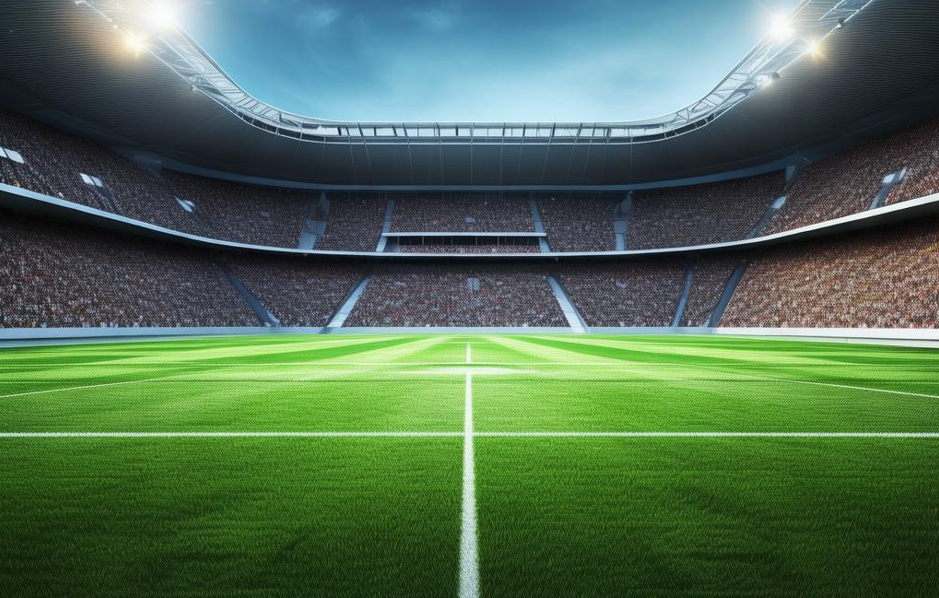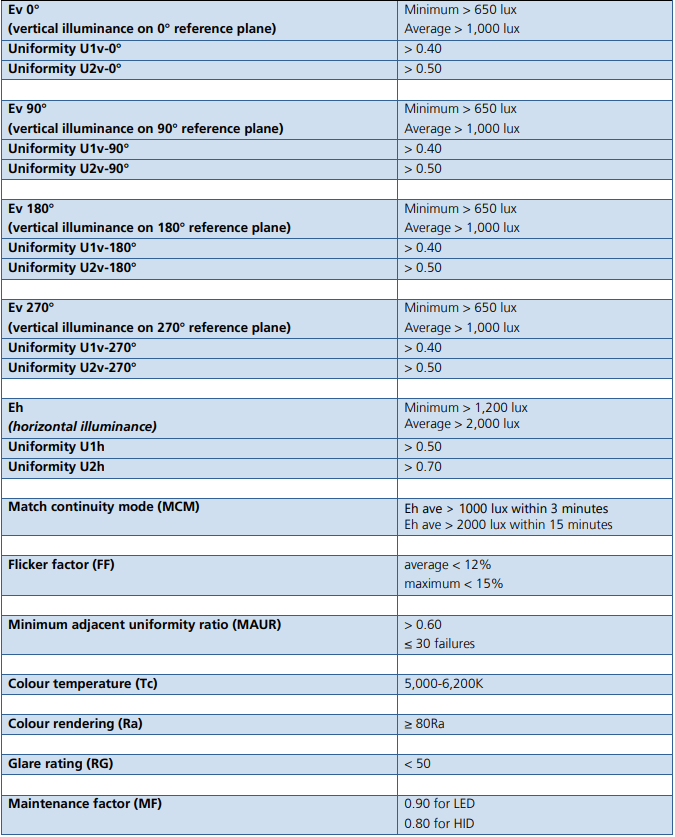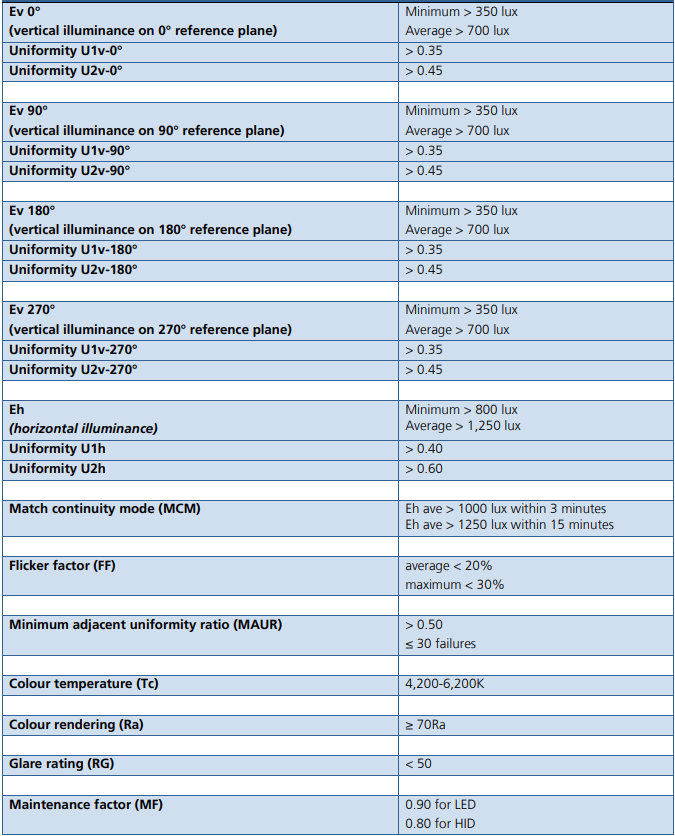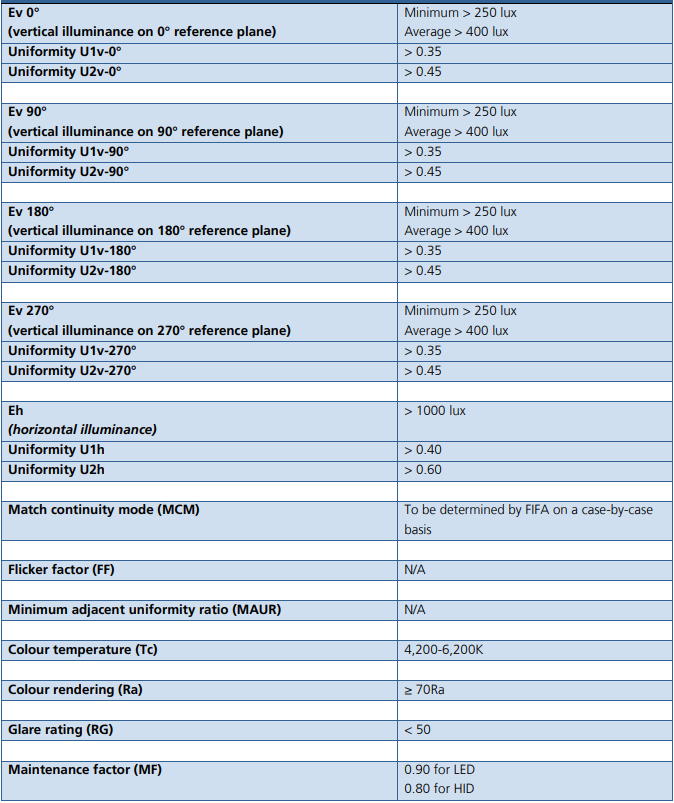Football Field Lighting Requirements:FIFA Lighting Standards
The International Football Federation (FIFA) has implemented significant changes to the artificial lighting standards for football fields, marking a comprehensive and groundbreaking shift that will greatly influence stadium construction. This article discusses the new attention index concept and focuses on the lighting, power supply, and lighting layout as per the updated standards.

1. Football field lighting levels
The 2020 FIFA football field standards have reclassified field lighting based on the types of events organized by FIFA. Different events have varying requirements for lighting and power supply standards. The updated standards categorize lighting levels into four tiers: A, B, C, and D. Unlike the classifications from 2011. 2007. and 2002. the new event classification offers a more detailed approach, particularly for events that require television broadcasting. For venues not requiring broadcast, the higher lighting standards are not mandatory, but the lighting must still meet the essential needs of athletes, staff, and spectators.
2. Football field lighting standards
The latest 2020 FIFA football field lighting standards show significant changes compared to the 2002. 2007. and 2011 versions. Traditional indicators have been revised, and new requirements have been introduced:
(1) The four cardinal directions (0°, 90°, 180°, 270°) are now explicitly defined for assessing vertical illumination and its uniformity in relation to the camera. While previous standards also considered vertical illumination in these directions, the new standards specify both the average and minimum vertical illumination values.
(2) Both horizontal and vertical illumination must meet minimum and average value requirements.
(3) New continuity lighting mode (MCM) requirements have been established: Class A venues must maintain uninterrupted lighting, Class B venues must achieve horizontal illuminance above 1000 lx within 3 minutes and above 2000 lx within 15 minutes, Class C venues must have horizontal illuminance above 1000 lx within 3 minutes and above 1250 lx within 15 minutes, while Class D venues have no continuity requirements.
(4) A flicker ratio index has been introduced, which must satisfy both maximum and average criteria.
(5) Introduced the minimum adjacent uniformity ratio (MAUR) index;
(6) Adjusted the standard value for color temperature: The color temperature index in FIFA's 2007 and 2011 standards is lower than that of the 2002 standard. For major events like international matches that are televised, the color temperature requirement is over 4000K, whereas the 2002 standard required more than 5500K. The new FIFA 2020 standard outlines more specific color temperature ranges based on the venue's level;
(7) Proposed different maintenance coefficient values for LED and HID lighting. The latest 2020 FIFA artificial lighting standard for football fields takes into account a broader range of indicators. The football competition standards in developed countries, particularly in Europe and the United States, are quite comprehensive, making the new standard significantly impactful. Thorough research and analysis of advancements in technology will benefit the development of football venues in my country and provide guidance for constructing football facilities in China.
3. Flicker Requirements
The 2020 FIFA artificial lighting standard for football fields imposes stricter and higher standards for flicker. Flickering lights during broadcasts can cause the TV image to stutter during slow-motion replays, severely affecting the viewing experience and potentially leading to economic losses in countries or sports with advanced commercialization. As television broadcasting transitions to ultra-high-definition 4K/8K, slow-motion and ultra-slow-motion replays are becoming increasingly important.
Flicker is a critical issue that must be addressed in modern sports broadcasting. Therefore, lighting design and implementation at venues should aim to minimize flicker as much as possible. The factors contributing to flicker can vary based on the modulation of the flicker, the frequency of the alternating current, and the camera's frame rate.
4. FIFA Football Field lighting Standards
4.1 FIFA Football Field Lighting Standards A
FIFA lighting standard A | |
Ev 0° (vertical illuminance on 0° reference plane) | Minimum > 1,000 lux Average > 1,500 lux |
Uniformity U1v-0° | > 0.50 |
Uniformity U2v-0° | > 0.60 |
Ev 90° (vertical illuminance on 90° reference plane) | Minimum > 1,000 lux Average > 1,500 lux |
Uniformity U1v-90° | > 0.50 |
Uniformity U2v-90° | > 0.60 |
Ev 180° (vertical illuminance on 180° reference plane) | Minimum > 1000 lux Average > 1500 lux |
Uniformity U1v-180° | > 0.50 |
Uniformity U2v-180° | > 0.60 |
Ev 270° (vertical illuminance on 270° reference plane) | Minimum > 1,000 lux Average > 1,500 lux |
Uniformity U1v-270° | > 0.50 |
Uniformity U2v-270° | > 0.60 |
Eh (horizontal illuminance) | Minimum > 1,500 lux Average > 2,500 lux |
Uniformity U1h | > 0.50 |
Uniformity U2h | > 0.70 |
Match continuity mode (MCM) | No disruption to light continuity is permitted |
Flicker factor (FF) | average < 1% maximum < 1% |
Minimum adjacent uniformity ratio (MAUR) | > 0.60 ≤ 10 failures |
Colour temperature (Tc) | 5,000-6,200K |
Colour rendering (Ra) | ≥ 80Ra |
Glare rating (RG) | < 50 |
Maintenance factor (MF) | 0.90 for LED 0.80 for HID |
4.2 FIFA Football Field Lighting Standards B

4.3 FIFA Football Field Lighting Standards C

4.4 FIFA Football Field Lighting Standards D

_thumb.jpg)